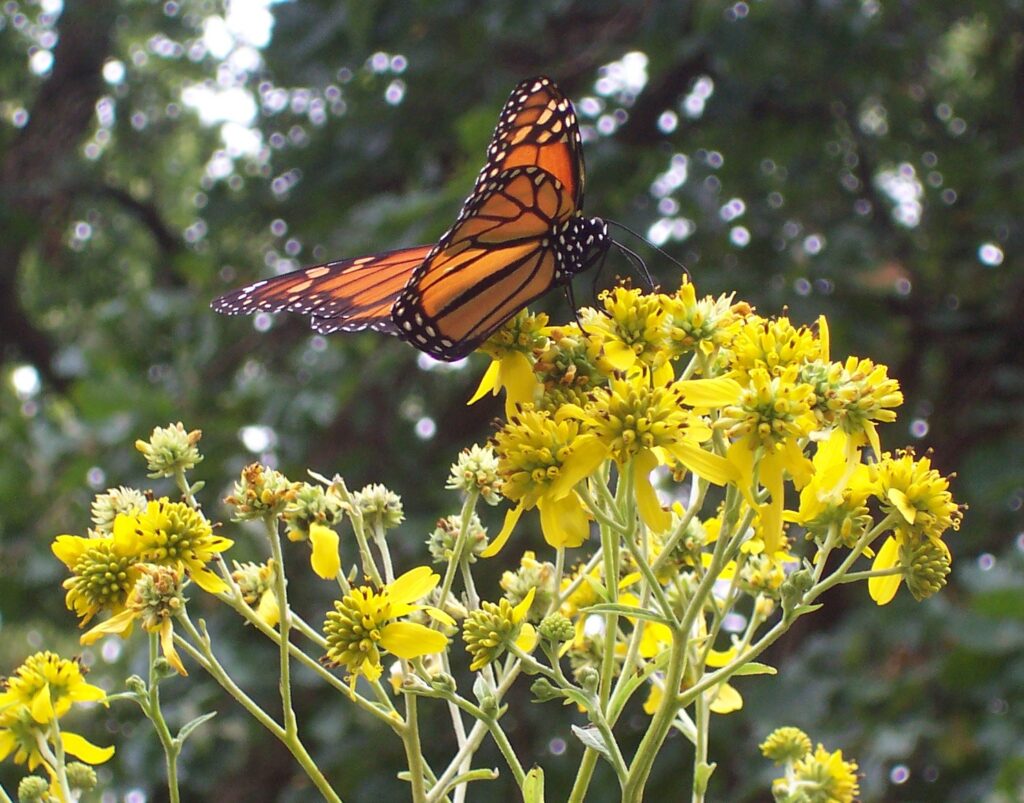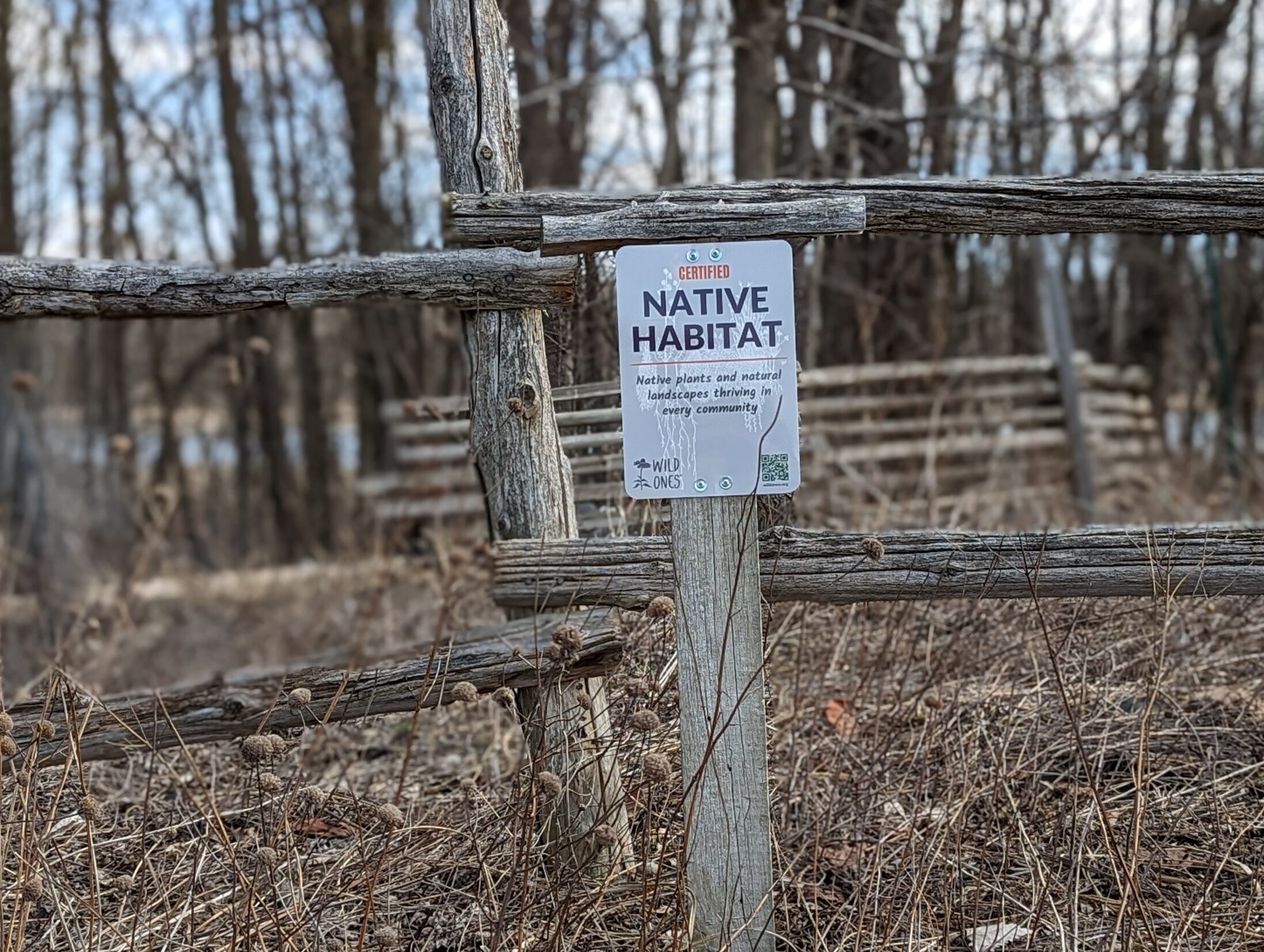A common misconception I hear all the time about monarch butterflies is that people think the same monarch is making the trip from Mexico to the U.S. and Canada and then returning every year, when in reality it is a series of successive generations making the journey. Monarchs that have been overwintering in Mexico will head north in spring to mate and lay eggs. The generation that emerges, called the first generation, will then continue to move further north. The second and third generation repeat this behavior, essentially stair-stepping themselves up to the Northern U.S. and portions of Southern Canada as the summer progresses. By the end of the summer the final generation (usually the fourth but sometimes the fifth generation) will emerge and this generation will physiologically be different than the earlier generations. This generation tends to be bigger and have more narrower wings and are solely focused on making the long journey back to Mexico where their great grandparent butterfly left from the previous spring. For some butterflies this could be as far as 3,000 miles.
This is an excerpt from the Wild Ones Journal
Current members can log in to read the latest issue or check out the Journal Archives.
However, in order for the spring and fall migration to occur, monarchs need to stop along their journey for food, rest, and to lay eggs. In an effort to help monarchs, whose numbers have been declining since the mid-1990s, nature enthusiasts are proudly registering their gardens as Monarch Waystations through Monarch Watch (monarchwatch.org). Founded in 1992 by Dr. Chip Taylor, Monarch Watch is a program out of the University of Kansas. The idea of waystations comes from the Pony Express and steam-powered trains when horses, conductors, and people could take breaks along their journeys to refuel and stock up on supplies for the long road ahead. For monarchs, garden waystations serve as places to fuel up on nectar and lay eggs on milkweed along their spring and fall migratory routes. Monarch Waystations can be any size, but Monarch Watch recommends at least 100 square feet, which can be split among several sites. Designated gardens must include nectaring and milkweed plants plus, nectaring plants for adult butterflies and milkweed plants for their caterpillars.

Since Monarch Watch’s inception, over 45,000 waystations have been created and the program is expected to cross the 50,000-garden threshold in the near future. When registering a garden, applicants can give their garden a name, with more than 37,000 opting to do so. These names help reveal hidden themes, meanings, and concepts gardeners associate with their gardens. I was part of a project from the University of Kansas and Oklahoma City Zoo and Botanical Garden that explored these names, and here are some major themes that emerged as well as the stand-out names that made me laugh, smile, and think.
Spoonerisms, alliterations, and wordplay!
Garden names emerged as a playground for showcasing literary and linguistic skills with names embracing spoonerisms (Flutterby Garden; Andy’s & Obie’s Garden: Flutterbies, Mumble Bees & Hummingbirds Welcome!), alliterations (Monarch Manor; Pollinator Paradise), puns (Beauty and the Bees; The Monarchy; Abby’s Habbytat), as well as abundant references to pop culture and literature (Got Milkweed?; The Secret Garden; Abandon All Hope Farm; Aiders of the Lost Monarch; Raiders of the last monarch).
Animals
While it is no surprise that the words monarch and butterfly are heavily featured in a monarch themed garden program, other animals also appeared including bluebirds (Bluebirds and Butterflies On The Hill), squirrels (Weathers Feathers and Squirrel Emporium), rats (River rat lighthouse on the mighty Fox River), hawk (Hill of the Hawk), dog (3 White Dogs Garden), and even fish (Fat Fish Farm Monarch Glenn).
Diversity
How many ways can you say butterfly? One of the most common words used in garden names was butterfly, which became a useful way to measure language diversity with butterfly appearing in 14 other languages. Maybe you know mariposa (Spanish) and papillon (French) but how about parpar (Hebrew), skoenlapper (Afrikaans), kelebekler (Turkish), memengwaa (Ojibwe), liblikas (Estonian), vlinder (Dutch), or borboleta (Portuguese)?
Family
Gardens became a place to honor family with gardens named after mothers (Patricia’s patch (after my mom who taught me to love nature)), fathers (SEE LOOK DAD – MILKWEED IS PRETTY), aunts (Trying Aunt Marge), uncles (Uncle Franks Apple Town), and grandparents (GiGi’s Garden of Eatin’; Pop Pop’s Monarch Hangout; Nana ‘Matriach Of The Monarchs’).Grandparents and the abundance of names for them featured including Papaw (Papaw’s Garden), Mamaw (Mamaw’s Flutterby Garden), Mema (Mema’s Monarch Inn), Baba (Baba’s Monarch Inn), Grammy (Grammy’s Milkweed Patch), Oma (Oma’s Nectar Garden), and Opa (Opa’s Butterfly Hostel at the Shore) among many others.
Location
The most common name in the entire database is also the most literal being My Backyard which featured over 200 times! Other literal names my yard or my front yard were also very common. Naming gardens after habitat and landscape features occurred with gardens named after prairies (Prairie Whisper), creeks (Dragonfly Creek), meadows (Cypress Meadow), and hills (Butterflies and Bees Hilltop).
Mortality
Butterflies are unique in that in many cultures they are symbols of death due to the transition from caterpillar to butterfly. Monarchs especially have long been connected with death in Mexico due to their fall migration aligning with Day of the Dead Celebrations. So, it is not all that surprising that some garden names lean heavily into this theme with names referencing deities or spiritual beings (Angel Butterflies), spirituality (Spirit in the Sky), or after someone who had passed. In fact, the longest name in the registry was a dedication: [Name] in honor of the coolest Mom that ever lived. She was so ahead of her time.
Positivity!
Feelings and emotions were frequently included in garden names with them all being positive such as love (For The Love of Pets and Sunsets (and Butterflies too)), wonder (Garden of Tiny Wonders), healing (The Mended Wing Healing Garden), and joy (Puddle Jumpers Joyful Place).
So, what does this all tell us about gardens? By looking into the naming aspect of gardens, we found that patterns of ownership, permanence, positivity, and family are all associated with Monarch Waystations. These insights can help conservation programs like Monarch Watch better understand who is and who is not participating in these programs and ultimately tailor messaging to hopefully increase overall participation. The one common thread is that behind every name it is a desire to help conserve monarch butterflies and that comes across no matter what name a waystation was given.
If you are interested in registering your garden as a monarch waystation, visit monarchwatch.org, and let your creative side shine when naming your garden! If you want to learn more about garden names visit doi.org/10.1002/pan3.10586, where the scientific paper is open access and freely available.

Written by Emily Geest.
Emily is a postdoctoral fellow in conservation and science at Oklahoma City Zoo and Botanical Garden researching butterflies in urban environments.
“What’s in a name? That which we certify as a Wild Ones Native Habitat by any other name would sustain as richly.
Register for Wild Ones’ Certified Native Habitat program! Native habitats help protect and restore biodiversity, improve air and water quality, and provide wildlife with quality food and shelter. Naming your garden adds a personal touch and inspires others in your community. Take action now, make a difference, and be recognized for your dedication to a healthier planet. With every certified habitat, we come closer to a vision of native plants thriving in every community.


This article was made possible through the support of the Monarch Joint Venture (MJV), a collaborative network dedicated to conserving the monarch migration across North America and long-time partner of Wild Ones. Read more about Wild Ones’ 2024 MJV Grant.

